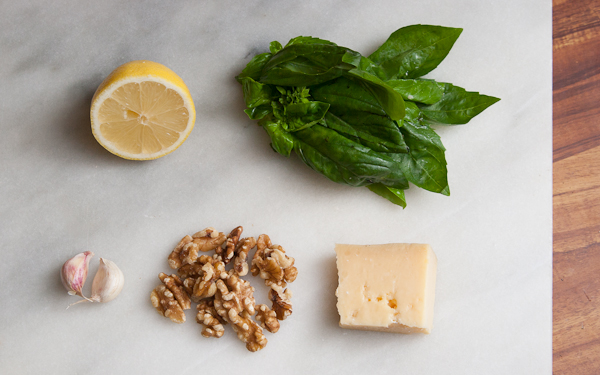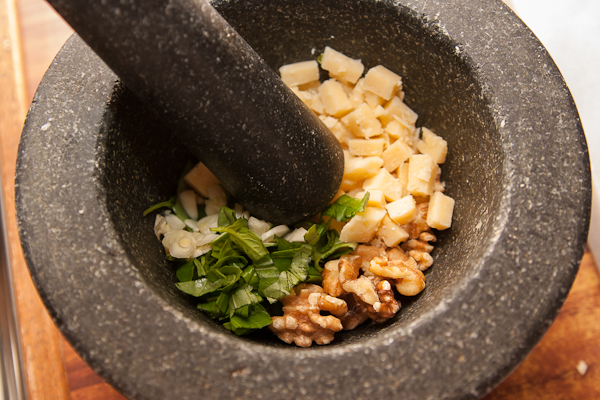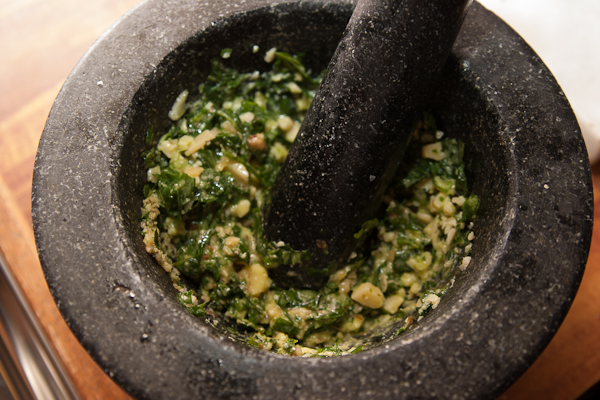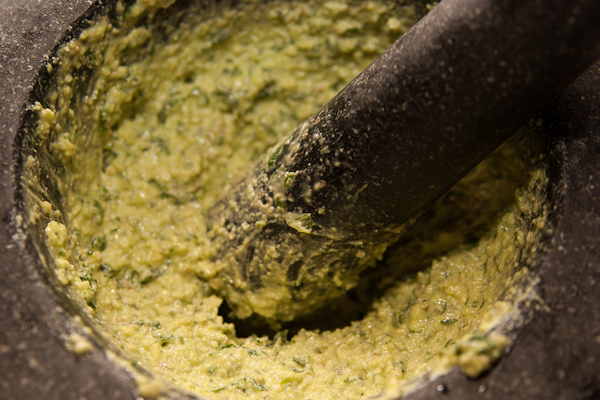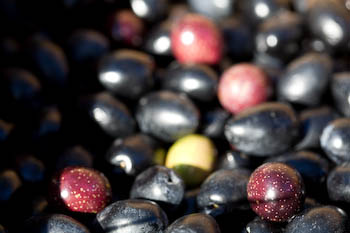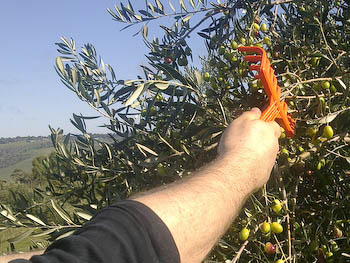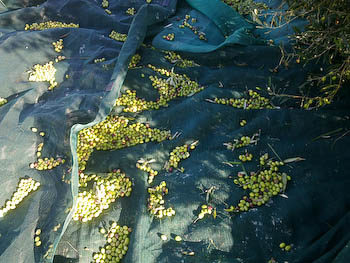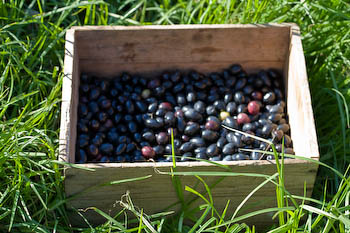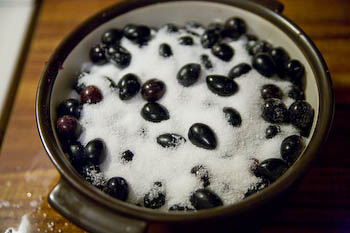Pesto is a beautiful sauce combining fresh basil, garlic and parmesan with a base of nuts and oil. Tangy and flavourful, if you need an excuse to grow some basil plants this is it! Pesto goes well on pizza or pasta and makes a great dip to serve with cheese and crackers. I use walnuts here but any nut can be used really – pine nuts are used in a lot of traditional recipes. Lightly toast the nuts first by tossing them in a pan over low-medium heat until just starting to change colour. Pine nuts burn very easily and taste awful when burnt, so keep an eye on them. A food processor works well but I like using a mortar and pestle – after all the words pesto and pestle share a root word. If a food processor is used I suggest blending cheese and nuts first until the consistency of bread crumbs, then adding oil and lemon juice and finally the basil, pulsing until the basil is in small pieces – don’t take it so far that there’s no specks of basil left.
Depending on the ingredients on hand flat leaf parsley can also be added. Lemon is not completely traditional but I like the extra kick of flavour, and it makes up for not using as much raw garlic as some recipes.
Ingredients
- 1-3 cloves of garlic, to taste
- 1 chunk of parmesan or grana padano cheese, around 50g/2 oz
- a handful of toasted walnuts, pine nuts or other neutral flavoured nuts.
- 1/3 cup good olive oil
- juice of half a lemon
- 1 good bunch of fresh basil
- salt
Method
Pick basil leaves off any large stems. Dice or grate the cheese. Add a pinch of salt, nuts, garlic, cheese and basil to a large mortar.
Start pounding and stirring until the ingredients are fairly well broken down and mixed together.
Add olive oil and lemon juice and continue to mix. until the mixture is fairly smooth.
